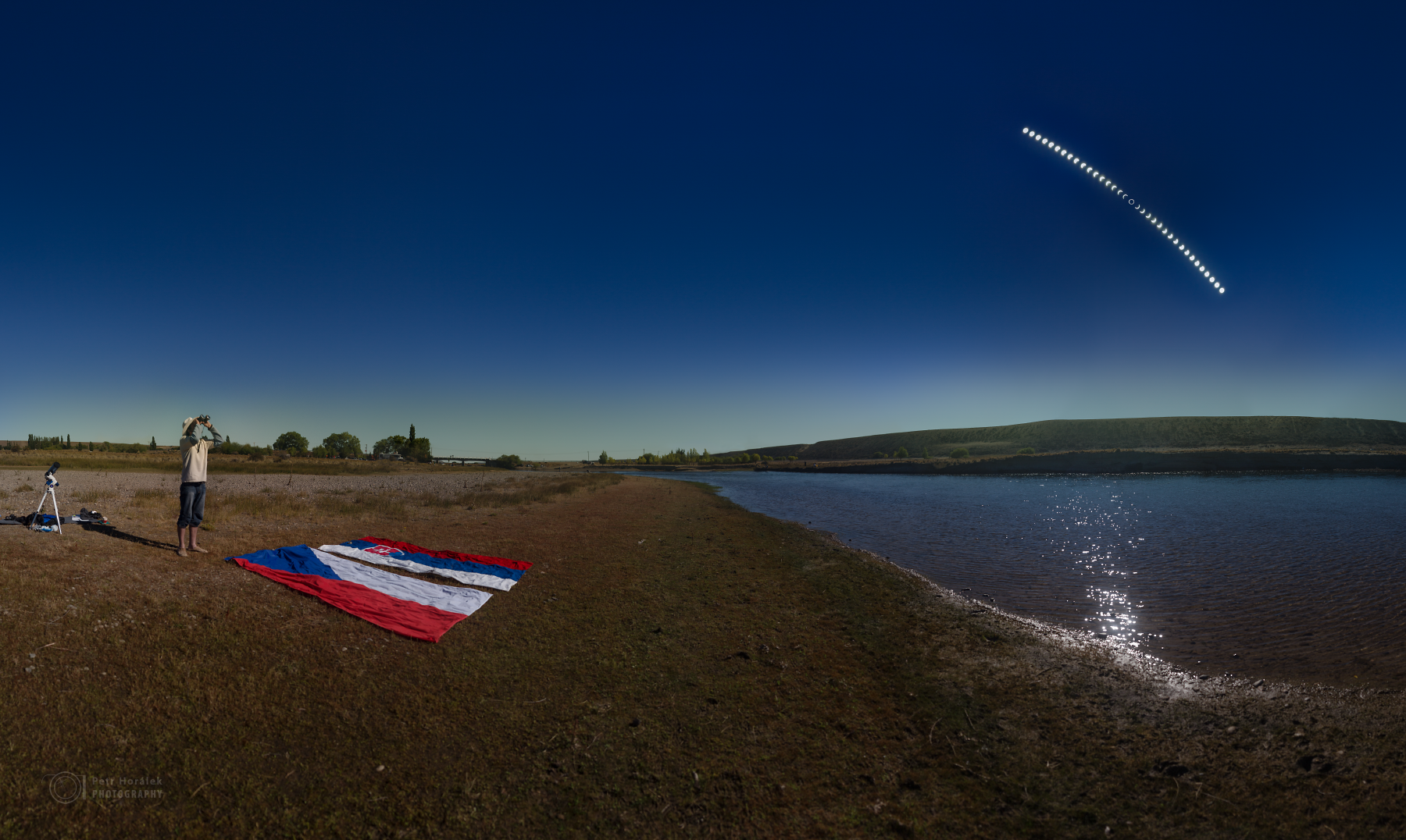 What a wonderful experience on 26th February, 2017, in the deep Argentinian Patagonia. Me and my friend, we both witnessed the deep and incredibly short annular solar eclipse (duration about 53 sec.) in a blue sky with absolutely no cloud! The eclipse was so deep that even if the Sun wasn’t covered totally, the environment grew darker and all shadows were drab. The place we chose was just a few dozens of meters from pleasant campsite, on the shore of small river close to Facundo village in Chubut, Argentina. My friend Dano was enjoying the event with huge pride as he traveled so far from his home in Slovakia just to see this. This is why he dropped large flag of his country on the ground. And so did I… Used Canon 6D, Samyang 24 mm, f4, ISO 100. For the eclipse frames taken exposures 1/200s (and Baader filter), for the foreground (captured as panorama just shortly after the maximum of the eclipse) taken exposures 1/1000s.
See also the fantastic results from classical film photography, post-processed by prof. Miloslav Druckmüller!
What a wonderful experience on 26th February, 2017, in the deep Argentinian Patagonia. Me and my friend, we both witnessed the deep and incredibly short annular solar eclipse (duration about 53 sec.) in a blue sky with absolutely no cloud! The eclipse was so deep that even if the Sun wasn’t covered totally, the environment grew darker and all shadows were drab. The place we chose was just a few dozens of meters from pleasant campsite, on the shore of small river close to Facundo village in Chubut, Argentina. My friend Dano was enjoying the event with huge pride as he traveled so far from his home in Slovakia just to see this. This is why he dropped large flag of his country on the ground. And so did I… Used Canon 6D, Samyang 24 mm, f4, ISO 100. For the eclipse frames taken exposures 1/200s (and Baader filter), for the foreground (captured as panorama just shortly after the maximum of the eclipse) taken exposures 1/1000s.
See also the fantastic results from classical film photography, post-processed by prof. Miloslav Druckmüller!
Using classical film FujiColor Superia 200, Canon EOS 3000 and Skywatcher MAK 90mm/1250mm, we were able to deal with extremely high dynamic range (in ratio 1:5 000 000) of the solar photosphere to reveal chromosphere and even a faint hint of solar corona during the eclipse. The post-processing, which included scattering mask algorithm, reducing of global contrast and aditive noise, presents the annular eclipse in such great natural-view quality. Prof. Druckmüller also blended the captured chromosphere during the eclipse with data of NASA’s Solar Dynamic Observatory AIA 304 A and 171 A, the second one sharpened by NAFE software.



